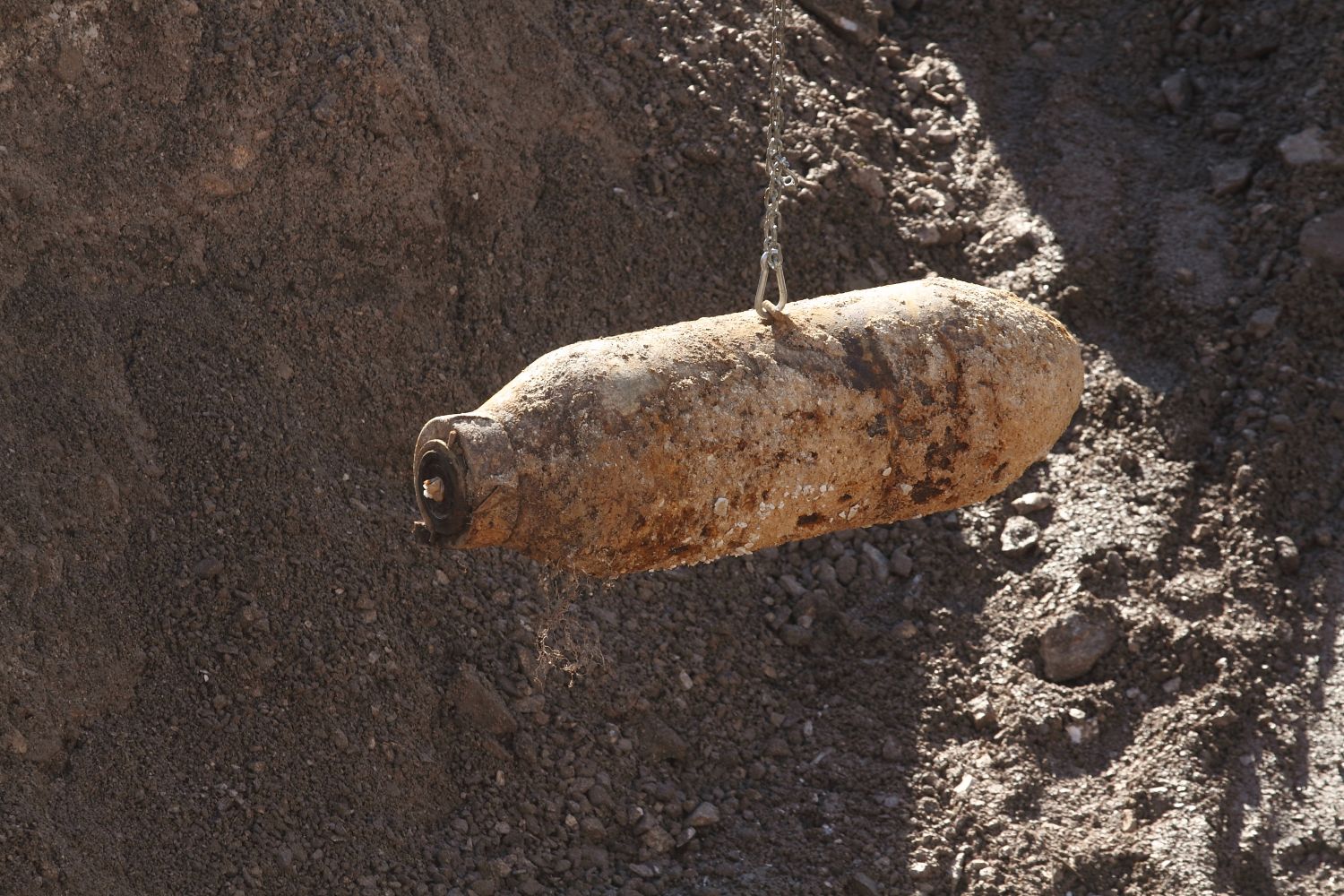The hidden risk of unexploded bombs in construction
Every day across the UK and Europe, construction teams dig, drill and pile their way into ground that has seen more than a century of human activity - and, in some cases, the violent legacy of two world wars. Beneath new housing estates, rail corridors and city centre redevelopments, there is still a hidden danger that refuses to disappear - unexploded ordnance (UXO), writes John Ridgeway.
Between 1914 and 1945, millions of bombs, mines and shells were dropped or buried across Europe. Many failed to detonate. In the UK alone, particularly in industrial cities such as London, Birmingham, Liverpool and Coventry, the Luftwaffe bombardment left a dangerous inheritance. Today, more than 80 years later, unexploded bombs still turn up on construction sites with unsettling regularity.
In 2023, for example, an unexploded Second World War device discovered near a housing development in Plymouth led to the evacuation of hundreds of homes. Similar incidents occur every year across the continent - from Amsterdam’s canals to Berlin’s new commercial zones - where buried munitions are routinely unearthed during excavation or piling work. Germany estimates that as many as 10% of the 2.7 million tonnes of bombs dropped during the Second World War did not explode.
Why construction projects are at risk
The combination of deep excavation, piling and groundworks makes construction projects particularly vulnerable to UXO encounters. Modern regeneration schemes often target derelict industrial land, dockyards, or urban infill plots - precisely the areas that were most heavily bombed during wartime. Even rural projects such as wind farms, pipelines and transport corridors are not immune, as air raids and training ranges were scattered widely across Europe.
In the UK, areas around ports, manufacturing hubs and airfields carry the highest risk. Across Europe, countries like Germany, Belgium, the Netherlands and Poland maintain full-time bomb disposal units dedicated to neutralising ordnance unearthed by developers and utility companies. Despite extensive mapping and historical research, the true extent of buried explosives remains uncertain.
An encounter with unexploded ordnance is not just a historical curiosity - it can bring real disruption and danger. When a suspected bomb is found, work must stop immediately, emergency services must be called and the site evacuated. Depending on the size and location of the device, surrounding properties or transport routes may also need to be cleared.
Beyond the immediate safety risks, the financial implications can be significant. Delays to construction schedules, the cost of emergency response and the reputational damage of poor site planning can all be severe. In extreme cases, insurance claims and legal liabilities may follow if a failure to carry out adequate risk assessment is proven.
Risk assessment and prevention
In the UK, guidance from the Construction Industry Research and Information Association (CIRIA) outlines a clear approach for managing UXO risk. The process begins long before the first spade hits the ground, through historical desk studies, risk mapping and geophysical surveys. Specialist UXO consultants are often engaged to assess whether a site lies within a known bombing zone and to recommend mitigation measures.
Across Europe, similar frameworks exist. Germany, for instance, has established federal and state-level ordnance clearance services that developers must consult during the permitting process. In the Netherlands, the government maintains a national database of potential bomb drop zones that is referenced in early design and planning stages.
Increasingly, technology is playing a role. Magnetometer and ground-penetrating radar surveys can identify metallic anomalies buried deep beneath the surface, while drones and GIS mapping tools can integrate historical bombing data into modern planning systems. The objective is always the same - to identify potential hazards early, reduce the risk of surprises and protect both people and projects.
While UXO specialists provide the technical expertise, responsibility for managing the risk ultimately lies with developers, contractors and project managers. Construction teams must ensure that site investigations include consideration of UXO, particularly in regions with known wartime activity. Clear communication between design teams, clients and on-site workers is essential, as is the inclusion of UXO protocols in health and safety documentation.

In the rare event that a device is discovered, the correct response is to stop work, mark the location and notify authorities. This means that training and awareness are as vital as technology and regulation.
Learning from Europe
Europe’s approach to UXO management offers valuable lessons. In Germany, where an estimated 2,000 bombs are defused every year, clearance operations are seen as a normal part of the construction lifecycle. Budgets routinely include contingencies for potential ordnance removal and collaboration between government agencies and private developers ensures a consistent national response.
In contrast, UK awareness tends to spike only after high-profile incidents. While progress has been made through industry guidance and improved mapping, UXO risk management is still treated as an optional extra on some projects. As redevelopment intensifies in cities with wartime legacies, a more systematic approach will be essential.
Construction is, by its nature, an act of renewal - turning yesterday’s ground into tomorrow’s infrastructure. But in Europe, renewal must coexist with remembrance. The landscape carries scars of conflict that time and progress have not fully erased. Recognising and managing the risk of unexploded bombs is therefore not only a matter of safety and compliance - it is an act of respect for both history and human life.
By integrating UXO risk assessment into standard practice - just as we now do with environmental, archaeological and geotechnical surveys - the construction industry can continue to build confidently and responsibly on even the most complex of historical foundations.
Additional Blogs

Are architects losing their influence in the digital era?
For decades, architects have been the central creative force in construction, shaping the buildings we see and the way projects are conceived, communicated and delivered. Their role has been...
Read moreWhy the word “Innovation” has lost its meaning in construction
“Innovation” has become one of the most overused terms in construction. It appears in the dozens of press releases we receive each day, conference talks and project reports, often without any real...
Read more

Retrofit fatigue and are we asking too much of old buildings?
As the world pushes toward net-zero emissions, the pressure to decarbonise our built environment is more intense than ever. Governments, developers and building owners are investing heavily in energy...
Read more